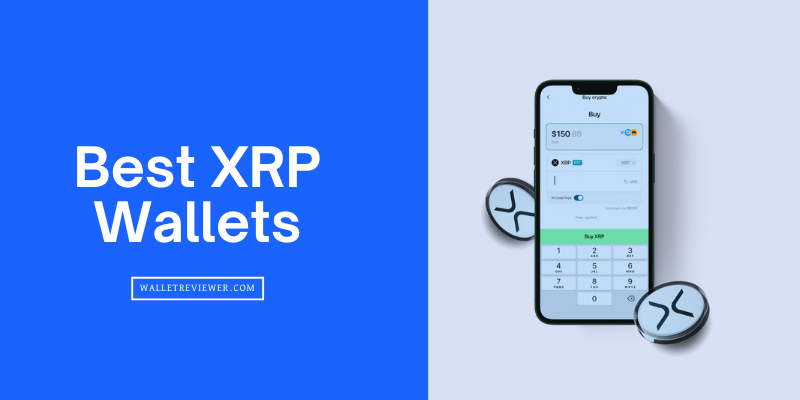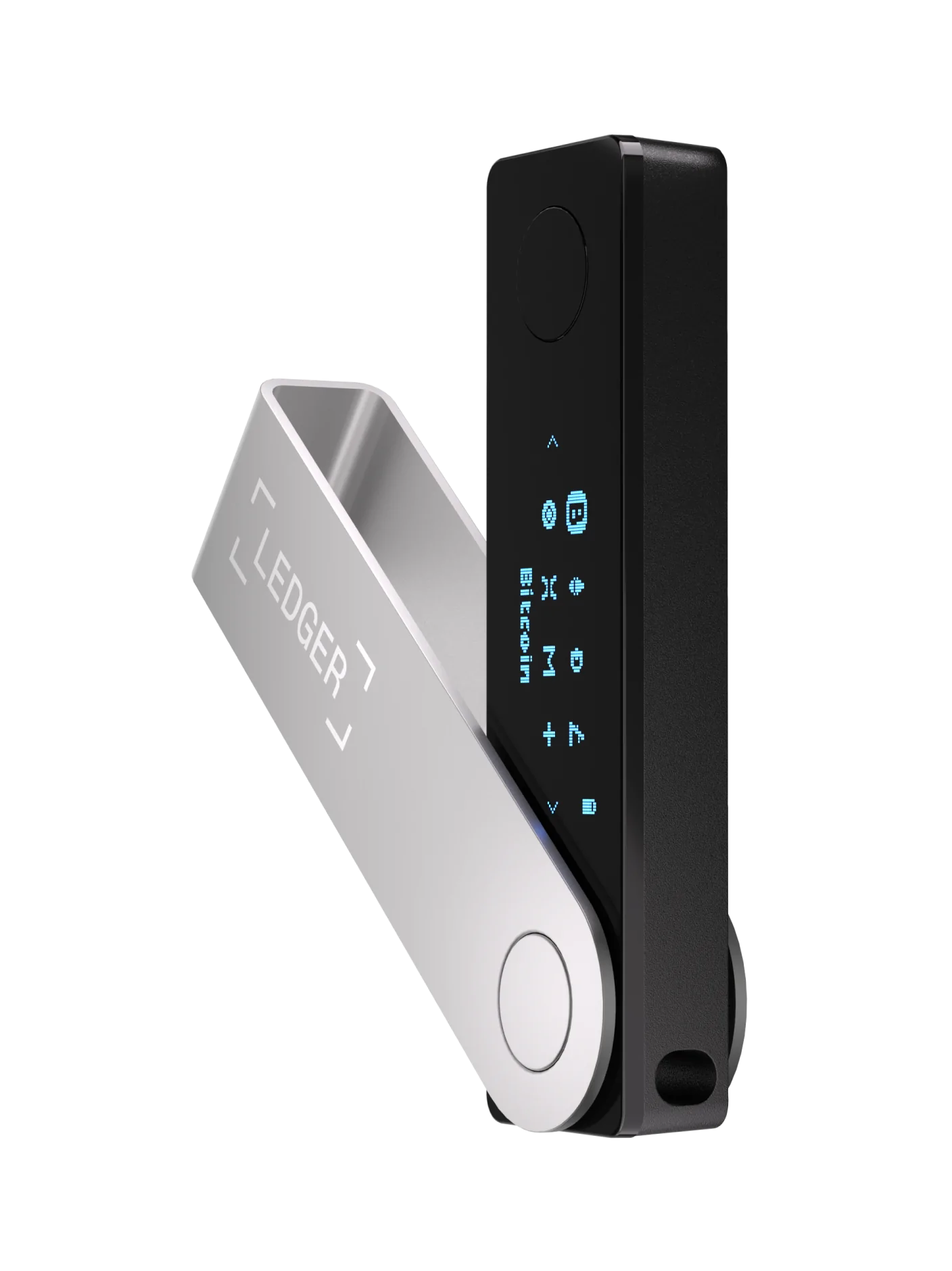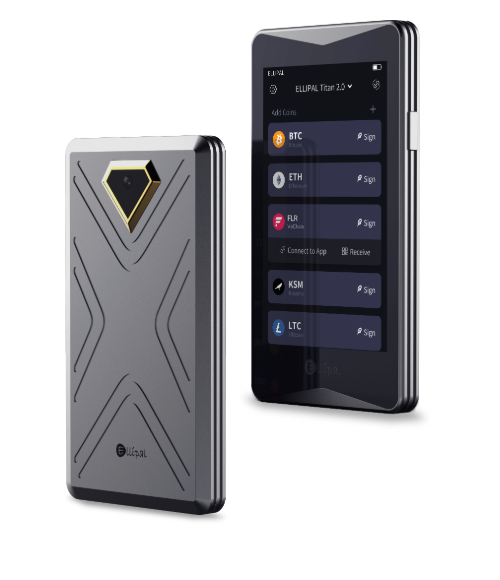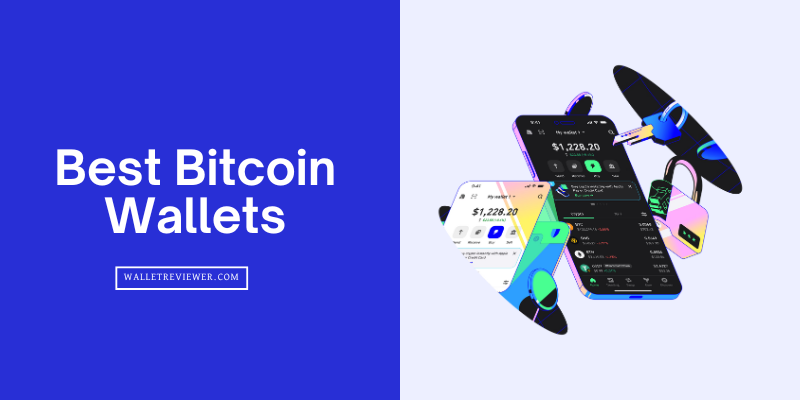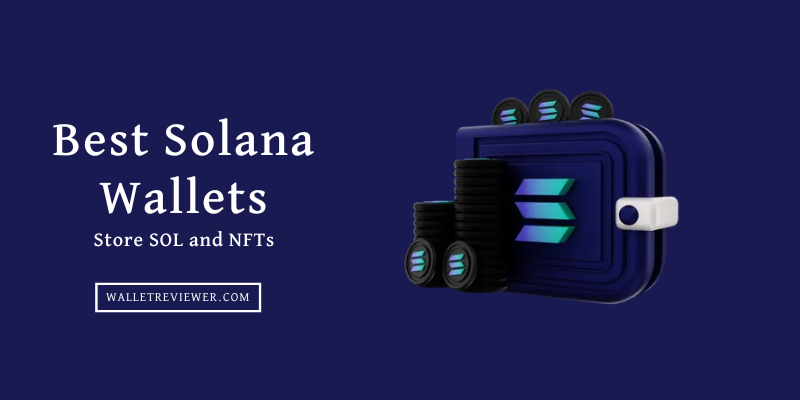You can’t just pick any app or device and assume your Ripple (XRP) tokens are secure. I’ve spent hours comparing top XRP wallets that are actually used by traders, long-term holders, and even crypto beginners.
I checked security features, XRP compatibility, wallet type (hot or cold), user control, backup options, and real user feedback before choosing the best Ripple wallets for this list.
Here is an in-depth guide on the best XRP wallets of 2025…
Best XRP Wallets for 2025: Our Top Picks
We have reviewed over 50+ crypto wallets for XRP based on XRP storage, security features, networks, fees, usability, devices, DeFi, and custodianship. Here are our top 7 best XRP wallets for Ripple:
- Ledger Nano X: Overall Best Ripple Wallet in 2025 (Trusted by 10M+ users)
- ELLIPAL Titan 2.0: Best cold storage wallet for XRP (no WiFi, no Bluetooth)
- Trust Wallet: Best hot wallet for XRP
- Keystone 3 Pro: Best XRP offline wallet (100% air-gapped)
- MetaMask Snaps: Best XRP software wallet for beginners
- Exodus: Best desktop wallet for Ripple
- Trezor Safe 5: Most secure hardware wallet for XRP (Tor browser and transaction mixing)
Top 7 Best Ripple Wallets: Software and Hardware Wallets for XRP
Our choice: 2 best XRP wallets based on our recommended criteria
Best XRP Crypto Wallets Reviewed for 2025
Here is the in-depth review of the 7 best XRP wallets along with their pros and cons:
1. Ledger Nano X: Overall Best XRP Wallet in 2025
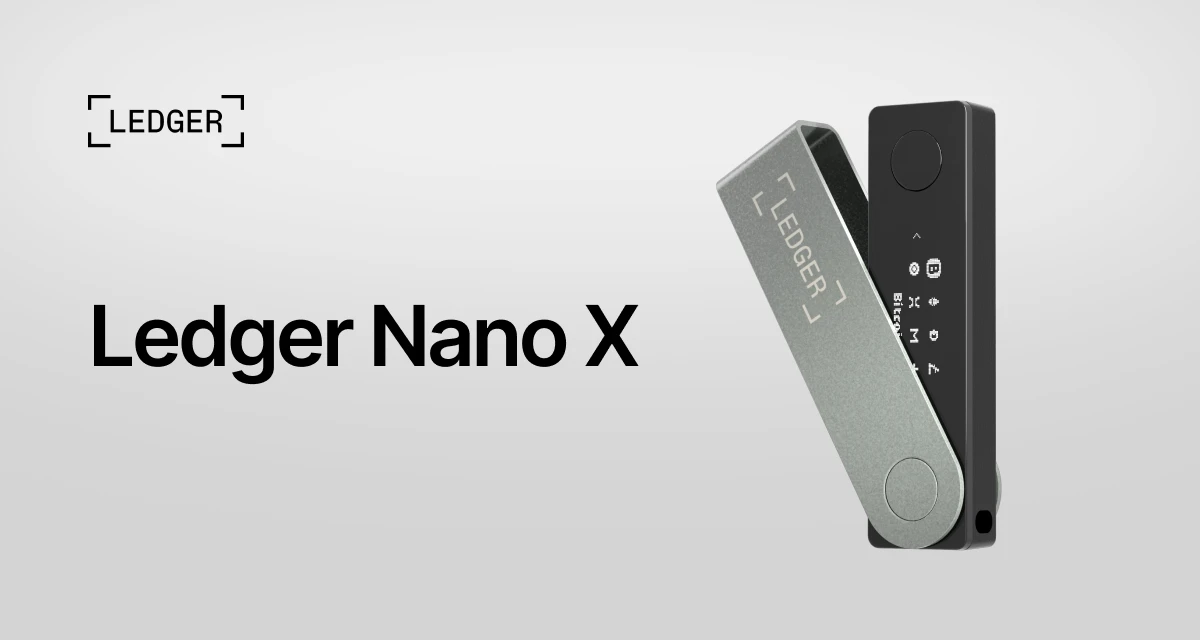
Ledger Nano X is our #1 best XRP wallets. You can store XRP safely offline, thanks to its Certified Secure Element chip and Ledger’s proprietary OS, BOLOS.
It supports XRP alongside 5,500+ coins and tokens. Bluetooth lets you manage assets on Android or iOS anytime. The device pairs with Ledger Live for buying, swapping, and tracking XRP through trusted partners. Its 100‑mAh battery powers eight hours of use, and if lost, recovery is easy using your seed phrase. (Read Ledger wallet review)
| XRP supported | Yes – full send/receive via Ledger Live & XRP Toolkit support |
| Coins Support | 5,500+ coins & tokens; up to 100 apps installed |
| Price | US $149 (ex‑VAT) per official site |
| Security features | CC EAL5+ Secure Element chip; BOLOS OS; PIN + physical buttons; 24‑word seed |
| Staking support | Supports staking select coins (e.g. Tezos, Tron) via Ledger Live; XRP not stakeable |
| NFT support | Native NFT via Ledger Live on Ethereum & Polygon; XRP NFTs not yet on Ledger |
2. ELLIPAL Titan 2.0: Best cold storage wallet for XRP
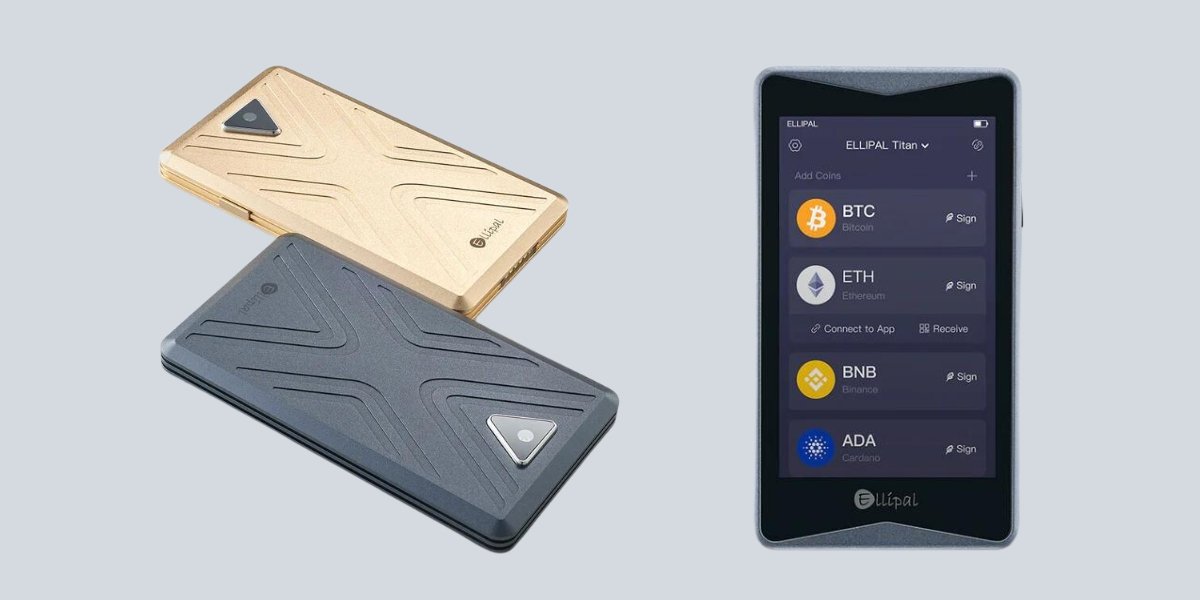
ELLIPAL Titan 2.0 is the top Ripple (XRP) hardware wallet. It supports XRP along with over 10,000 tokens across 40+ blockchains.
It is air‑gapped: no USB, Bluetooth, or Wi‑Fi, only QR‑code transfers, so your private keys never leave the device. Its CC EAL5+ secure element and full-metal sealed body resist physical tampering and trigger auto‑wipe if breach is detected.
The large 4‑inch IPS touchscreen makes XRP transactions clear and safe, letting you verify every transaction visually. Bundled with offline firmware updates and strong PIN/passphrase options, it balances usability and military‑grade security, all for a fixed $169.
| XRP supported | Yes. Full support for XRP with QR code-based send/receive functionality via the official app. |
| Coins Support | Over 10,000 coins and tokens across 40+ blockchains, including Bitcoin, Ethereum, Solana, XRP, ERC‑20, and NFTs. |
| Price | $169 for the standalone Titan 2.0. $199 for a bundle including a steel backup plate. |
| Security features | Air‑gapped QR transfers, CC EAL5+ secure element, full‑metal sealed, auto self‑destruct, PIN + passphrase, secret secondary wallet. |
| NFT support | Yes. Manages NFTs on Ethereum and Polygon networks through the ELLIPAL app. |
3. Trust Wallet: Best hot wallet for XRP
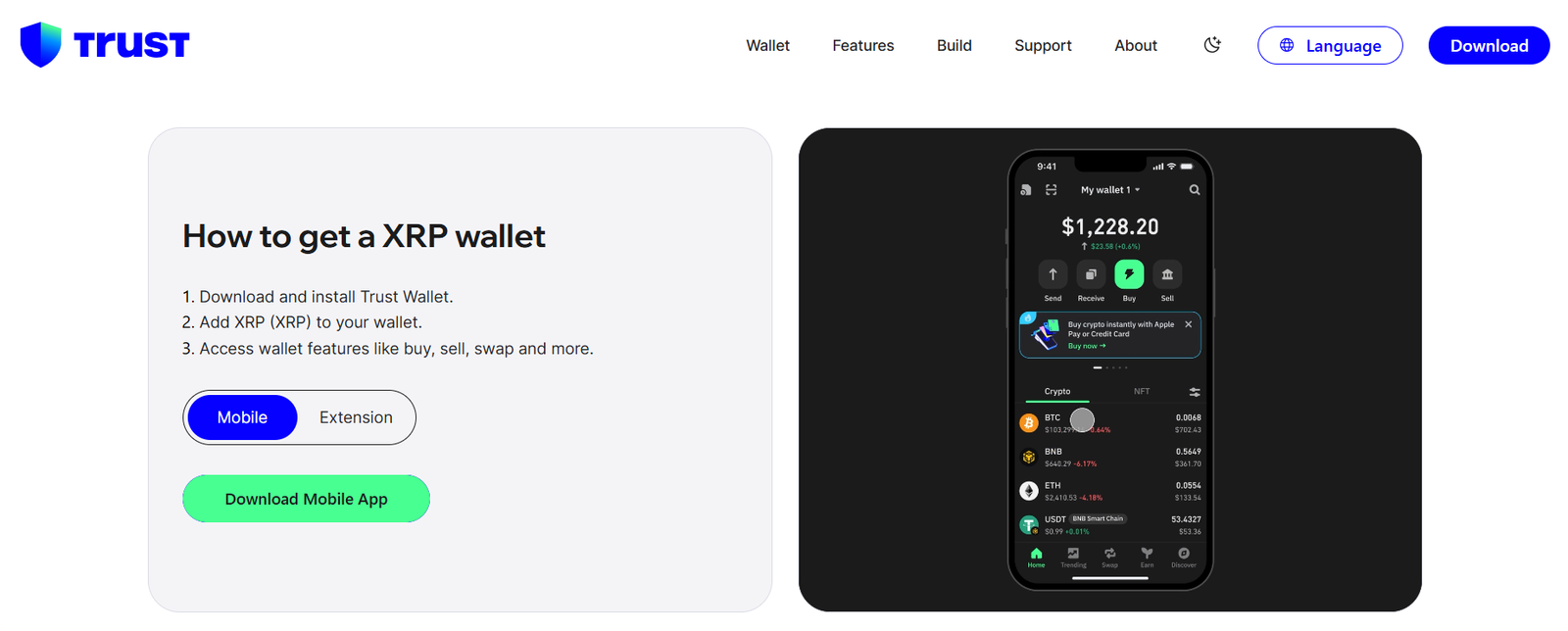
Trust Wallet is one of the most reliable XRP wallets for mobile users. It supports Ripple (XRP) natively, and over 70 million people have downloaded Trust Wallet globally.
You can manage more than 10 million digital assets, including XRP, on a single app. It’s fully non-custodial, so you keep complete control of your private keys.
Trust Wallet also connects easily with the XRP Ledger and supports DApps and Web3 features. There’s no need to share personal details, and the wallet is 100% free to use. It’s backed by Binance and regularly updated.
| XRP Supported | Yes, fully supported with native XRP Ledger integration |
| Coins Support | Supports over 10 million crypto assets across 100+ blockchains |
| Price | Free to download and use (no hidden fees) |
| Security Features | Biometric login, encrypted private keys stored locally, and recovery phrase |
| NFT Support | Yes, supports NFTs on multiple chains, including BNB and Ethereum |
4. Keystone 3 Pro: Best XRP offline wallet for long-term Storage
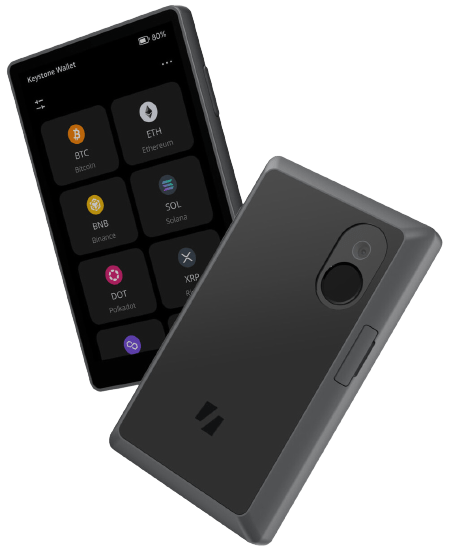
Keystone 3 Pro is one of the best XRP wallets because it offers unmatched security with a 100% air-gapped design, broad coin support, and a smooth user experience with a touchscreen. It supports native XRP via integration with XRP Toolkit on firmware M‑5.0 or later, allowing you to send and receive XRP seamlessly.
It’s 3 secure element chips (EAL 5+) and an air‑gapped design prevents online attacks. A large 4‑inch touchscreen and fingerprint unlock make transactions quick and intuitive. It supports over 5,500 cryptocurrencies, including XRP, and works with MetaMask and other wallets.
| XRP Purchase | Yes‑native XRP supported via XRP Toolkit on firmware M‑5.0+ |
| Coins Support | Over 5,500 coins and tokens across 200+ blockchains |
| Price | $149 USD |
| Security features | 3 EAL 5+ secure‑element chips, air‑gapped, fingerprint unlock, anti‑tamper |
| Staking support | Yes for EVM chains via MetaMask; XRP staking not natively available |
| NFT support | Yes – NFT lock screen display supported |
5. MetaMask Snaps: Best software Ripple wallet for beginners
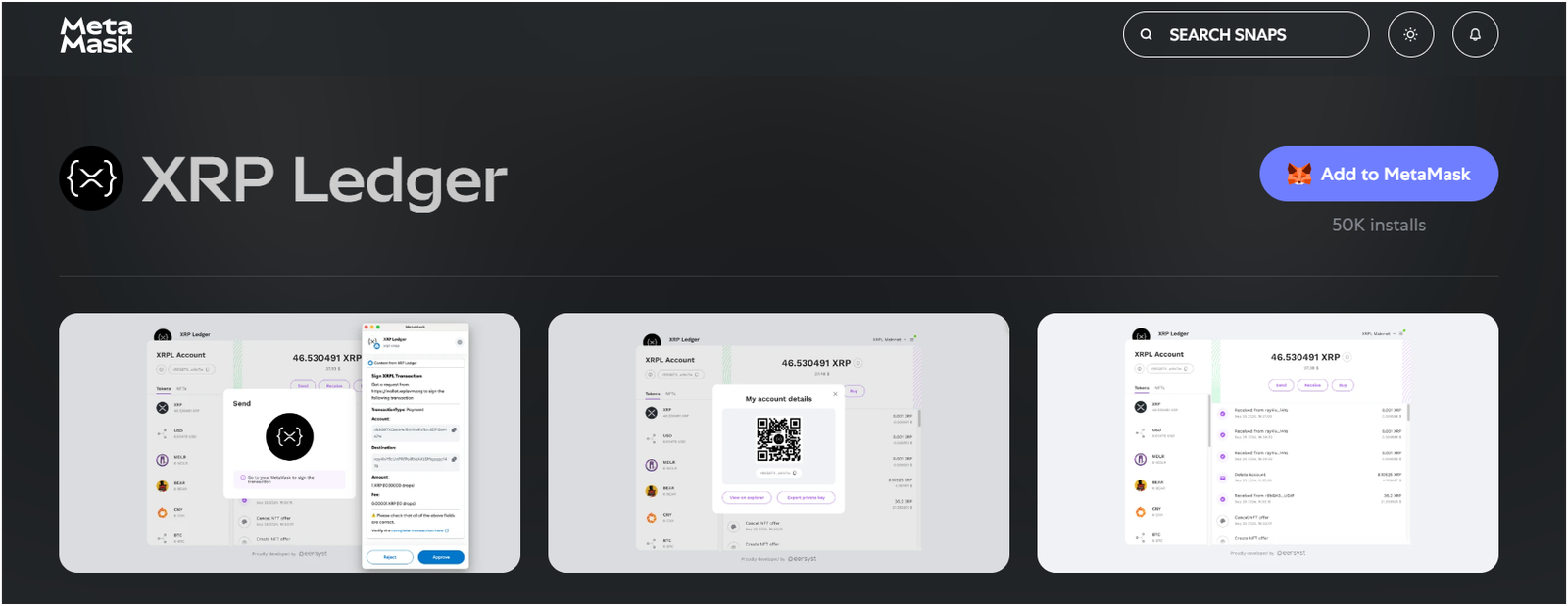
MetaMask Snaps with the XRP‑Ledger Snap is another best XRP wallet. It lets you manage native XRP, XRPL tokens, and NFTs directly inside the trusted MetaMask interface, used by over 30 million people.
You can send transactions in under 5 seconds with fees under $0.01, and open your account with just 10 XRP for activation. On‑ramp via Transak allows instant XRP purchases by credit card, and you can bridge assets to/from Ethereum, all securely audited and built by trusted developers.
| XRP supported | Yes – Native XRP on XRPL mainnet & testnet, no wrapping needed |
| Coins support | XRP, XRPL tokens, NFTs, plus Ethereum assets in the same wallet |
| Price | Snap is free, Transak fee applies for XRP purchases |
| Security features | Built-in MetaMask security, Snap is sandboxed, hardware wallet support |
| NFT support | Yes – full management of XRPL NFTs inside MetaMask |
6. Exodus: Best XRP Wallet for Desktop Users
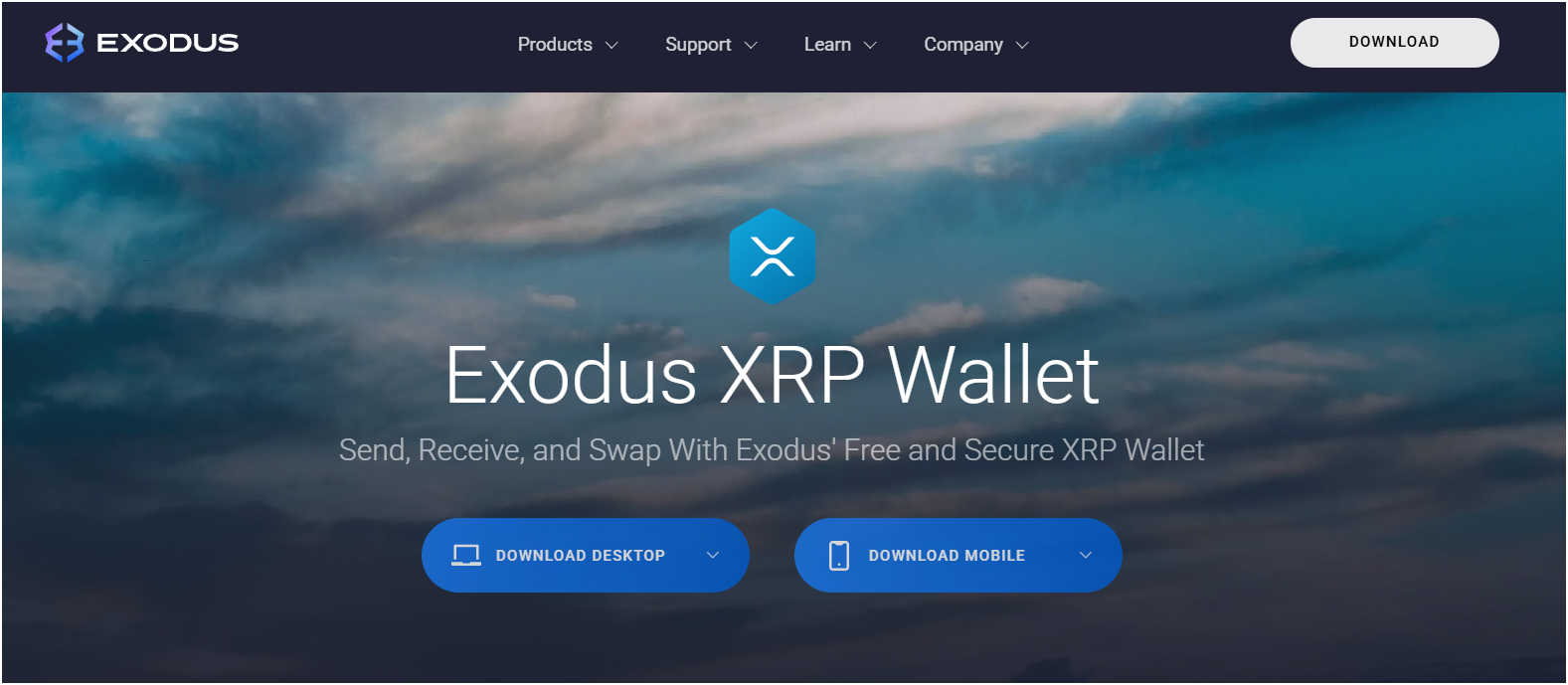
Exodus is one of the best wallets to store, manage, and exchange XRP securely. It fully supports XRP and gives you complete control of your private keys.
The wallet has an easy interface and works on Windows, macOS, Linux, iOS, and Android. You can also use it with Trezor hardware for extra safety. Exodus supports over 360 cryptocurrencies, including Ripple (XRP).
It has built-in staking for selected coins and supports NFTs on the Ethereum and Solana networks. There are no extra charges to use Exodus, only network fees apply. It is trusted by over 4 million users worldwide.
| XRP Purchase | Yes |
| Coins Support | 360+ cryptocurrencies including BTC, ETH, XRP |
| Price | Free to use (network fees only) |
| Security Features | Private keys stored locally, Trezor integration |
| Staking Support | Yes (for SOL, ADA, ATOM, ALGO, and more) |
| NFT Support | Yes (Ethereum & Solana NFTs supported) |
7. Trezor Safe 5: Most secure hardware wallet for XRP
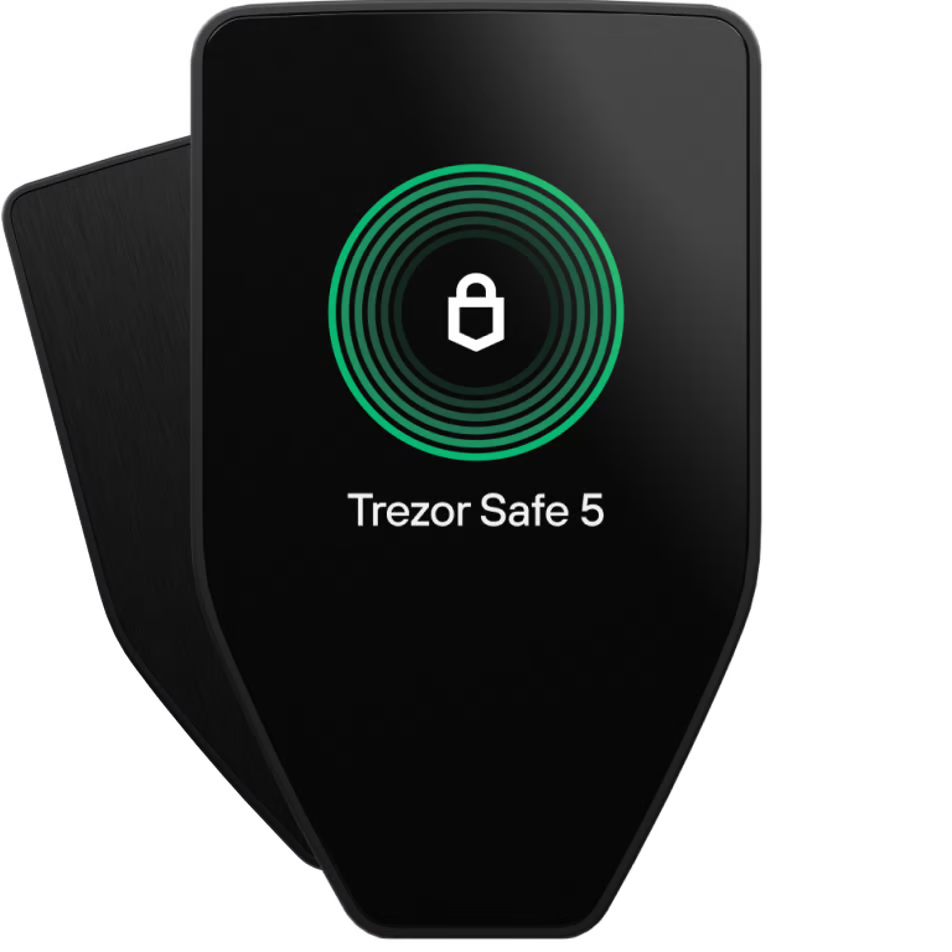
Trezor Safe 5 is the safest wallet for XRP because it combines top-layer security with full XRP support. It uses an EAL6+ secure element chip, PIN and passphrase protection, on-device confirmations, and an easy-to-use Trezor Suite app.
It supports XRP natively, meaning you can send and receive XRP without needing additional plugins. Trezor Suite integrates XRP Ledger features, including a required 1 XRP reserve, and destination tag input.
The device protects private keys offline, resists malware, and is backed by open‑source transparency, all verifiable on the official site.
| XRP supported | Yes. All Trezor Safe models, including Safe 5, support XRP. The Trezor Suite app handles base reserve (1 XRP) and destination tags. |
| Coins supported | Thousands of coins and tokens (including BTC, ETH, ADA, SOL, XRP). Safe 5 is a universal multicoin hardware. |
| Price | USD 169 on official Trezor store. |
| Security features | EAL 6+ secure element chip; PIN & passphrase; on-device confirmations; open-source; Gorilla Glass; microSD support; packaging seals. |
| NFT support | Yes. Through Trezor Suite and third-party apps you can view and manage NFTs (e.g., Ethereum-based). |
Comparing the Best Crypto Wallets for XRP in 2025
| Wallet | XRP Support | Security Features | Type & Price |
|---|---|---|---|
| Ledger Nano X | Supports XRP natively via Ledger Live. | Secure Element chip (CC EAL5+), PIN code, Bluetooth disabled option, recovery phrase. | Hardware wallet. ~$149–$169. |
| ELLIPAL Titan 2.0 | Native XRP support, plus 10,000+ other tokens. | Air‑gapped (QR‑based), metal casing, CC EAL5+ secure element, anti‑tamper. | Cold hardware. ~$169. |
| Trust Wallet | Full XRP support and XRPL token support. | Mobile hot wallet with encryption, biometrics, and recovery phrase. | Mobile app. Free. |
| Keystone 3 Pro | Supports XRP (some newer models may need manual setup). | Air‑gapped QR, triple secure‑element chips, fingerprint sensor, open-source, PIN, anti‑tamper. | Cold hardware. $149–$169. |
| MetaMask Snaps | XRP Ledger fully integrated via XRPL Snap. | Software hot wallet with MetaMask’s security model, extension sandboxing. | Software extension. Free. |
| Exodus | Native XRP support with desktop and mobile sync. | Non‑custodial software wallet, encrypted local storage, recovery phrase. | Desktop + mobile. Free. |
| Trezor Safe 5 | Full XRP Ledger support on device. | EAL6+ secure element, PIN/passphrase, open‑source, on-device confirmations, color touchscreen, alerts. | Hardware. ~$169+. |
How to Choose the Secure & Best XRP Wallet?
When choosing the best XRP wallet, you should look for a wallet that gives you full control, good features, and strong security. Below are the top 8 criteria you should check before selecting any XRP wallet.
1. Security Features
A good and best XRP wallet must have strong security. It should support two-factor authentication (2FA), biometric login, and encryption. Some wallets also offer cold storage or hardware-level protection, which keeps your private keys offline.
You should also check if the wallet is open-source or audited by experts. This helps you avoid scams and protect your XRP from hacks or theft. Never choose a wallet that does not clearly show how it protects your funds.
2. Wallet Type (Hardware, Software, Online)
There are different types of XRP wallets: hardware, software, mobile, desktop, and web wallets. Hardware wallets like Ledger are the safest but cost money.
Software wallets are free and easy to use but less secure. Web wallets are risky for large amounts. Always choose a wallet type that matches your usage. For daily use, mobile or desktop is fine. For long-term holding, hardware is better.
3. Private Key Control
The best XRP wallets give you full control of your private keys. If a wallet holds your private keys for you, it means you don’t fully own your XRP.
Look for wallets that let you backup or export private keys or seed phrases. This gives you full access to your crypto, even if the app or website shuts down. “Not your keys, not your crypto” is a rule you must follow.
4. XRP Purchase Support & Features
Not all best XRP wallets support full Ripple storage features. Some best XRP wallets only allow storing XRP, while others let you do staking, trading, or connecting to the XRP Ledger.
The best XRP wallet should support XRP address tagging, transaction memo, and destination tags. These features are needed when sending XRP to exchanges. Also, check if the wallet allows easy XRP transfer with low network fees.
5. Backup & Recovery Options
Always check the wallet’s backup system. The best XRP wallets offer a 12 or 24-word recovery phrase during setup. You should store this phrase safely.
This is the only way to recover your XRP if you lose your phone or delete the app. Never use those best XRP wallets without backup or those that do not clearly show how to recover your funds.
6. User Interface & Ease of Use
The wallet must be simple to use. A clean interface helps you check balance, send or receive XRP easily. Look for wallets with easy navigation, proper help guides, and simple setup.
Beginners should avoid complicated XRP wallets with too many features. Also, check if the app supports multiple languages and has responsive customer support.
7. Multi-Currency Support
If you use other cryptocurrencies along with XRP, pick a wallet that supports multiple coins. This makes it easier to manage your full portfolio in one place. Many top XRP wallets also support Bitcoin, Ethereum, and stablecoins. This is helpful for people who trade or invest in multiple tokens.
8. Community Trust & Reviews
Always choose wallets that are well-reviewed and trusted by the XRP community. Check ratings on Google Play, App Store, or Reddit discussions.
If many users complain about bugs, lost funds, or poor service, avoid that wallet. Trust is built over time, so always go with names that are active and transparent in the crypto space.
What is an XRP Wallet?
An XRP wallet is a software application or a physical device that allows you to interact with the XRP Ledger. It doesn’t actually “store” your XRP in the traditional sense, like money in a physical wallet.
Instead, it stores your unique cryptographic keys, a public key (like your bank account number) and a private key (like your PIN or password).
These keys are what prove you own your XRP on the decentralized XRP Ledger. Without your private key, no one can access or move your XRP.
How does Ripple Wallet Work?
Here’s the simple breakdown of how it operates:
- The XRP Ledger: Imagine a massive, global, public database (a blockchain, if you’re familiar with the term) that records every single XRP transaction. This is the XRP Ledger. It’s maintained by a network of independent servers, not a single company.
- Your Wallet’s Role: Your best XRP wallet acts as your interface to this ledger. When you want to send XRP, your wallet uses your private key to “sign” the transaction, proving that you authorize the transfer. This signed transaction is then broadcast to the XRP Ledger, which verifies it and updates the balance.
- Addresses: Each of the best XRP wallets has a unique public address (it looks like a string of letters and numbers, usually starting with
r). This is what you share with others if you want them to send you XRP.
It’s a bit like sending an email: your email client (the wallet) uses your password (private key) to send a message (transaction) to another email address (XRP address) via the internet (XRP Ledger).
Read more about cryptocurrency wallets:
Why Use an XRP (Ripple) Wallet?
Using a dedicated XRP wallet offers several key benefits, especially if you’re looking to actively manage your XRP holdings:
Store XRP Tokens
This is perhaps the most fundamental reason. An XRP wallet provides a secure environment for your digital assets. Unlike leaving your XRP on an exchange, where you don’t fully control your private keys (and are thus vulnerable if the exchange is hacked), holding XRP in your own wallet gives you full custody.
You are the sole owner of your private keys, meaning you have complete control over your funds. This is often summarized by the crypto mantra: “Not your keys, not your crypto.”
Send and Receive XRP Tokens
The best XRP wallet makes it incredibly straightforward to send XRP to anyone, anywhere in the world, as long as you have their XRP address. Similarly, you can receive XRP from others by simply providing them with your wallet’s public address.
The XRP Ledger is known for its speed and low transaction fees, making it efficient for global transfers. This is a big part of what makes XRP attractive for cross-border payments.
Trade XRP Coins
Many of the best XRP wallets, especially those with built-in exchange functionalities or integrations, allow you to trade XRP for other cryptocurrencies or even fiat currencies directly within the wallet interface.
Some wallets even support the decentralized exchange (DEX) built directly into the XRP Ledger, allowing peer-to-peer trading without needing a centralized intermediary.
Stake and Earn XRP Rewards
Now, this is an interesting point and one where we need to be clear. XRP does not operate on a Proof-of-Stake (PoS) consensus mechanism, which is typically what allows for “staking” rewards.
The XRP Ledger uses a unique consensus protocol called the XRP Ledger Consensus Protocol (formerly known as Ripple Protocol Consensus Algorithm or RPCA).
Therefore, you cannot “stake” XRP in the same way you would stake cryptocurrencies like Ethereum (ETH) or Cardano (ADA) to earn direct rewards for validating transactions.
How to Buy and Sell XRP: A Simple Guide
Step 1: Choose a Secure XRP Wallet
Pick the best XRP wallet to store your Ripple coins safely. Hardware wallets like Ledger Nano X or ELLIPAL Titan 2.0 offer top-notch security with cold storage, keeping your private keys offline.
For convenience, try software wallets like Trust Wallet or Exodus, which support XRP and DeFi features. Non-custodial wallets are best since you control your keys. Check our guide on the safest crypto exchanges to find platforms that work well with these wallets.
Step 2: Select a Trusted Crypto Exchange
Find a platform to buy or sell XRP. Look for crypto exchanges with lowest fees, like MEXC, Binance, Bybit, or Bitget, which support XRP and charge low transaction fees (around 0.00001 XRP per trade).
Make sure the exchange is secure, with features like two-factor authentication (2FA). Sign up, verify your identity, and link a payment method like a bank card or crypto wallet.
Step 3: Buy XRP
Once your account is set up, deposit funds (like USD or BTC) into the exchange. Search for the XRP trading pair (e.g., XRP/USD). Enter the amount you want to buy and check the low-fee XRP wallet options for transfers.
Confirm the purchase, and your XRP will appear in your exchange wallet. Move it to your secure XRP wallet for safe storage.

Step 4: Store Your XRP Safely
Transfer your tokens to your chosen best XRP wallets for secure storage. For hardware wallets, connect the device and follow the app instructions.
For software wallets, use the wallet address to receive XRP. Always back up your seed phrase offline (e.g., on paper or a metal backup like Cryptotag). This keeps your Ripple wallet protected from hacks.
Step 5: Sell XRP When Ready
To sell XRP, transfer it back to the exchange from your best XRP wallet. Select the XRP trading pair, enter the amount to sell, and confirm the trade.
The funds (like USD or another crypto) will go to your exchange account. Withdraw them to your bank or keep them in a multi-chain support wallet for other trades. Always use trusted platforms to ensure safe transactions.

Different Types of Ripple Wallets
Just like you have different ways to store your physical money (a piggy bank, a regular wallet, a safe), there are various types of XRP wallets, each with its own pros and cons in terms of convenience and security. Let’s break them down:
XRP Mobile Wallets
These are apps you can download and install on your smartphone (Android or iOS). They’re super convenient because you can access your XRP on the go, making payments or checking your balance anytime, anywhere.
- Pros: Easy to use, highly accessible, great for everyday transactions.
- Cons: Your phone can be vulnerable to malware or theft, so security depends heavily on your phone’s security and your own practices (like strong passwords and two-factor authentication). If you lose your phone, you could lose access to your XRP if you haven’t backed up your recovery phrase.
- Examples: Popular mobile wallets for XRP include Trust Wallet, Exodus, and Atomic Wallet.
Read More: Best Dogecoin wallets
XRP Hardware Wallets
They are considered the most secure way to store your XRP because they keep your private keys completely offline. This makes them much less susceptible to online hacks and malware.
- Pros: Top-notch security, ideal for storing large amounts of XRP for the long term (often called “cold storage”).
- Cons: Less convenient for frequent transactions, you need to physically connect the device to a computer or phone to use it, and they can be a bit pricier. If you lose the device and your recovery phrase, your XRP is gone forever.
- Examples: Ledger Nano X and ELLIPAL Titan 2.0 are well-known hardware wallets that support XRP.
XRP Paper Wallets
This is probably the most old-school method. An XRP paper wallet is literally a piece of paper with your public and private keys printed on it, often in the form of QR codes. Since it’s just paper, it’s completely offline and immune to cyberattacks.
- Pros: Extremely secure against online threats, as the keys are never exposed to the internet. It’s free to create (besides the cost of paper and ink!).
- Cons: Highly susceptible to physical damage (fire, water, tearing), loss, or theft. You need to be incredibly careful about where and how you store it. It’s also not practical for frequent transactions.
- How to use: You’d typically generate the keys offline, print them, and then sweep the funds into a software wallet when you need to spend them.
Read more: XRP vs Bitcoin and XRP vs Ethereum
How to Set Up an XRP Wallet?
Step 1: Choose Your Ripple Wallet Type
First things first, you need to decide which kind of wallet suits you best. Are you looking for something super convenient for daily use, like a mobile wallet (an app on your phone)? Or are you thinking about long-term, super secure storage for a larger amount of XRP, which might mean a hardware wallet?
For beginners, a reputable mobile wallet is often the easiest way to start. Do a quick search for well-reviewed XRP mobile wallets and pick one that feels right for you.
Step 2: Download and Install the App (for Mobile/Software Wallets)
Once you’ve chosen a mobile or software best XRP wallet, head over to your phone’s app store (Google Play Store for Android or Apple App Store for iOS) and download the official app. Make absolutely sure you’re downloading the correct app, as there can be fake ones out there.
Step 3: Create Your New XRP Wallet and Secure Your Recovery Phrase
When you open the wallet app for the first time, it will usually give you an option to “Create a New Wallet”. Click on that. The app will then show you a recovery phrase (sometimes called a “seed phrase” or “mnemonic phrase”).
This is typically a list of 12 or 24 random words. Write these words down, in the correct order, on a piece of paper (or multiple pieces of paper) and store them in a very safe, private place. This phrase is the master key to your XRP. If you ever lose your phone, forget your password, or your device breaks, this recovery phrase is the only way to get your XRP back.
Seriously, don’t skip this or store it digitally where it could be hacked!
Step 4: Set Up a Strong PIN/Password and Enable Security Features
After securing your recovery phrase, the wallet will usually prompt you to set up a PIN or a strong password for daily access to the app. Choose something unique and complex.
Additionally, look for options like Two-Factor Authentication (2FA) or biometric login (fingerprint or face ID) within the wallet’s settings and enable them. These add extra layers of security to protect your XRP from unauthorized access.
Step 5: Fund Your Wallet and Get Your Address
Once your best XRP wallet is set up and secured, you’ll see your unique XRP public address (it starts with an ‘r’). This is like your bank account number for XRP. You can now use this address to receive XRP.
To get XRP into your wallet, you’ll typically buy it from a cryptocurrency exchange and then “withdraw” it to your new wallet’s public address.
Read More: Best Bitcoin wallets
Why You Need an XRP Wallet

An XRP wallet is a must if you own or plan to buy Ripple (XRP). It keeps your XRP safe and lets you manage your crypto easily. Without a wallet, your XRP could be at risk on exchanges, which can get hacked. A secure XRP wallet gives you control over your private keys, so only you can access your funds.
Using a wallet also makes sending and receiving XRP simple, with low fees (as little as 0.00001 XRP per transaction). You can trade XRP, hold it for long-term investment, or even earn rewards on some wallets with DeFi features. Whether you choose a hardware wallet like Ledger Nano X or a software wallet like Trust Wallet, having your own best XRP wallet ensures safety and flexibility for managing your Ripple funds.
How Safe Are XRP Wallets?
XRP wallets can be very safe if you pick the right one and follow best practices. Hardware wallets, like ELLIPAL Titan 2.0 or Trezor Safe 5, offer top-notch security by keeping your private keys offline (cold storage). This protects your XRP from online hacks. Many hardware wallets also use EAL5+ certification, a high security standard, to guard against physical attacks.
Software wallets, like Exodus or MetaMask Snaps, are convenient but less secure since they’re online (hot wallets). To stay safe, always use non-custodial wallets, where you control your keys. Never share your seed phrase (a 12-24 word recovery code) and store it offline, like on paper or a metal backup like Cryptotag. Enable two-factor authentication (2FA) and keep your wallet app updated. By choosing the best XRP wallets and following these steps, your Ripple funds will stay protected.
Conclusion: Our Top Picks for XRP Wallets in 2025
After reviewing the best XRP wallets, here are our top picks for 2025. For maximum security, Ledger Nano X is the best hardware wallet, offering cold storage, EAL5+ certification, and support for XRP and other coins. It’s perfect for long-term holders. If you want a budget-friendly hardware option, Trezor Safe 5 provides strong security and an easy interface.
For those who prefer software wallets, Trust Wallet is a great choice for mobile users, with multi-chain support and DeFi features for trading XRP. Exodus is another solid software wallet, ideal for beginners due to its user-friendly design. Each of these safest Ripple wallets meets different needs, so pick one based on your budget and how you plan to use your XRP. Always prioritize security to keep your funds safe.
FAQs: Best Wallets to Hold XRP Tokens
What are the best XRP wallets for secure storage in 2025?
Ledger Nano X and the ELLIPAL Titan 2.0 are the best XRP wallets for secure storage.
The Ledger Nano X is a popular pick, offering a secure chip to keep your private keys offline and Bluetooth connectivity for convenience. The ELLIPAL Titan 2.0 takes security a step further by being completely “air-gapped,” meaning it never connects to the internet, relying solely on QR codes for transactions.
Are non-custodial XRP wallets safer than exchange wallets?
Yes, generally speaking, non-custodial XRP wallets are safer than exchange wallets if you prioritize control and security.
In a non-custodial wallet, you hold the private keys, meaning you have complete ownership and control over your XRP. The famous crypto saying “not your keys, not your crypto” applies here.
With an exchange wallet, the exchange holds your private keys, making your funds vulnerable if the exchange gets hacked, goes bankrupt, or freezes your account. While exchanges are convenient, non-custodial wallets give you true sovereignty over your assets.
Which hardware wallets support XRP and offer cold storage features?
Many leading hardware wallets offer excellent cold storage for XRP. Besides the ELLIPAL Titan 2.0, which is renowned for its air-gapped security (meaning it never touches the internet, communicating via QR codes), other strong contenders include the Ledger Nano X and Ledger Nano S Plus, and the Trezor Model T (and their newer models like Trezor Safe 3 and Safe 5).
Can I stake or earn interest on XRP using supported wallets?
XRP does not support native staking or direct interest earning through its consensus mechanism.
Unlike some other cryptocurrencies that use Proof-of-Stake, the XRP Ledger uses a unique consensus protocol that doesn’t involve staking rewards for holding XRP in a wallet.
While you might find third-party platforms or decentralized finance (DeFi) protocols that offer opportunities to lend out your XRP for a yield, these are separate services with their own risks and are not a native feature of simply holding XRP in a wallet.
Which mobile wallets are best for managing XRP on iOS and Android?
The best XRP wallets for iOS and Android are Trust Wallet, MetaMask, Exodus Wallet, and Atomic Wallet.
These apps are generally easy to navigate, support multiple cryptocurrencies (including XRP), and often have built-in exchange features for convenience.
They allow you to send, receive, and monitor your XRP balance directly from your smartphone, making them great for everyday use.
How do I backup and recover my XRP wallet securely?
Backing up and recovering your XRP wallet securely primarily revolves around your recovery phrase (also known as a seed phrase or mnemonic phrase).
When you set up a new wallet, you’ll be given a list of 12 or 24 words. The most secure way to back this up is to write it down on paper (or engrave it on metal) and store multiple copies in different, secure, and private locations.
Never store it digitally or share it with anyone. If you ever lose your device or forget your password, you can use this exact phrase to restore access to your XRP on a new wallet or device. This phrase is your ultimate key!
What are the top multi-currency wallets that support XRP?
Among the top hardware options that support XRP and many other assets are the Trezor Safe 5 and Keystone 3 Pro. Both are excellent choices, offering robust security for a wide range of digital assets. The Ledger Nano X is another fantastic multi-currency XRP hardware wallet.
Is it safe to store XRP in a paper wallet or an offline wallet?
Storing XRP in a paper wallet or any other offline method (often called “cold storage”) is incredibly safe from online threats like hacking and malware, as your private keys are never exposed to the internet. This is a huge security advantage.
However, the safety then shifts to physical security. A paper wallet is just a piece of paper, so it’s highly vulnerable to physical damage (fire, water, tearing), loss, or theft.
It’s safe if and only if you store it in an extremely secure physical location, like a fireproof safe, and take precautions against all physical risks. It’s not practical for frequent transactions.
